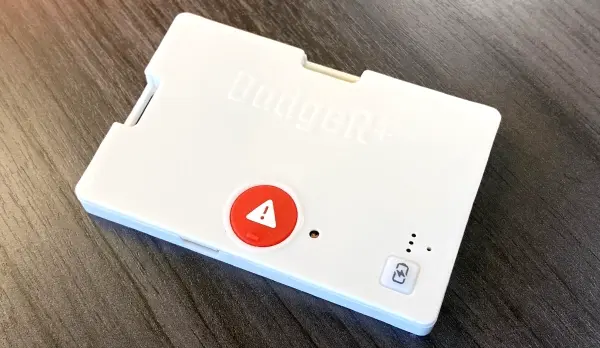Wireless Panic Buttons: Enhancing Staff Protection in the Workplace
Discover the benefits of utilizing wireless panic buttons for staff protection in a workplace setting.
The Importance of Staff Protection in the Workplace
In any workplace setting, the safety and protection of staff members is of utmost importance. Employers have a responsibility to create a secure environment where employees can feel safe and protected while carrying out their duties. This not only promotes a positive work culture but also enhances overall productivity and morale.
Staff protection becomes even more crucial in high-risk industries or workplaces where employees may encounter potential threats or hazardous situations. It is essential for employers to implement effective safety measures to mitigate risks and ensure the well-being of their staff members.
One such safety measure that has gained significant importance in recent years is the use of panic buttons. These buttons provide employees with a quick and convenient way to summon help in case of an emergency or when they feel threatened. Wireless panic buttons, in particular, offer several advantages over their wired counterparts, making them an excellent choice for staff protection in the workplace.
Advantages of Wireless Panic Buttons
Wireless panic buttons offer a range of benefits that make them highly effective in enhancing staff protection. Firstly, their wireless nature allows for easy installation without the need for complex wiring systems. This means that panic buttons can be placed strategically throughout the workplace, ensuring quick and convenient access for employees in times of need.
Furthermore, wireless panic buttons can be easily integrated with existing security systems, such as CCTV cameras or access control systems. This enhances the overall security infrastructure of the workplace and enables a prompt response from security personnel in case of emergencies.
Another advantage of wireless panic buttons is their portability. Unlike wired panic buttons, which are fixed in place, wireless buttons can be carried by employees, allowing them to have instant access to help regardless of their location within the premises. This mobility proves especially useful in large or multi-level workplaces where immediate assistance may be required in different areas.
Additionally, wireless panic buttons often come with features like GPS tracking, enabling employers or security personnel to pinpoint the exact location of the distress signal. This feature can significantly reduce response time and ensure that help reaches the employee as quickly as possible.
Overall, the advantages of wireless panic buttons make them a reliable and efficient solution for staff protection in the workplace.
Comparison: Wireless vs Wired Panic Buttons
When considering panic buttons for staff protection, it is essential to understand the differences between wireless and wired options. Wired panic buttons require a physical connection to a central control panel or security system. This connection is established through wiring systems, which can be time-consuming and costly to install, especially in existing buildings.
On the other hand, wireless panic buttons operate through radio frequency or cellular networks, eliminating the need for complex wiring. This not only reduces installation time but also allows for greater flexibility in button placement.
Moreover, wired panic buttons are fixed in place and cannot be easily moved. This limitation may pose a challenge in workplaces where the layout or requirements change over time. Wireless panic buttons, however, are portable and can be repositioned as needed, ensuring continued accessibility for staff members.
In terms of maintenance, wired panic buttons may require regular checks to ensure the wiring is intact and functioning correctly. Wireless panic buttons, on the other hand, typically require less maintenance, as they rely on batteries or power sources that can be easily replaced.
Considering these factors, wireless panic buttons offer a more convenient and cost-effective solution for staff protection in the workplace.
Implementing Wireless Panic Buttons in the Workplace
The successful implementation of wireless panic buttons in the workplace requires careful planning and execution. To begin, employers should conduct a thorough assessment of the workplace to identify areas where panic buttons should be installed. These areas may include high-risk zones, such as entrances, parking lots, or isolated areas.
Once the ideal locations for panic buttons are determined, employers should ensure that the buttons are easily accessible and clearly labeled. Employees should be educated about the purpose and functionality of the panic buttons, emphasizing the importance of utilizing them during emergencies.
It is also crucial to establish an effective response protocol that outlines the steps to be taken when a panic button is activated. This protocol should involve immediate notification of security personnel or designated emergency contacts who can respond promptly to the distress signal.
Regular testing and maintenance of the panic buttons are essential to ensure their proper functioning. Employers should establish a schedule for testing the buttons and replace batteries or power sources as needed. Additionally, staff members should receive periodic training on the correct usage of the panic buttons to maximize their effectiveness.
By implementing wireless panic buttons in the workplace and following these guidelines, employers can significantly enhance staff protection and create a safer working environment.
Ensuring Proper Training and Maintenance
Proper training and maintenance are key factors in maximizing the effectiveness of wireless panic buttons for staff protection. Employers should prioritize comprehensive training programs that educate employees on the correct usage of panic buttons and the appropriate actions to take during emergencies.
Training sessions should cover topics such as how to activate the panic button, the importance of providing accurate information when help is summoned, and how to stay calm and composed during stressful situations. Employees should also be informed about the potential consequences of misusing panic buttons to avoid any unnecessary alarms.
In addition to training, regular maintenance of the panic buttons is crucial to ensure their reliability. Employers should establish a maintenance schedule that includes routine checks to test the functionality of the buttons and replace batteries or power sources as needed.
Furthermore, employers should encourage open communication with employees regarding any concerns or issues related to the panic buttons. This feedback can help identify any potential improvements or address any technical difficulties that may arise.
By providing proper training and ensuring regular maintenance, employers can instill confidence in their staff members regarding the effectiveness of wireless panic buttons for their protection.
To learn more about wireless panic buttons, visit 911cellular.com.
Tags: Emergency notifications Emergency communication Mass notification system







